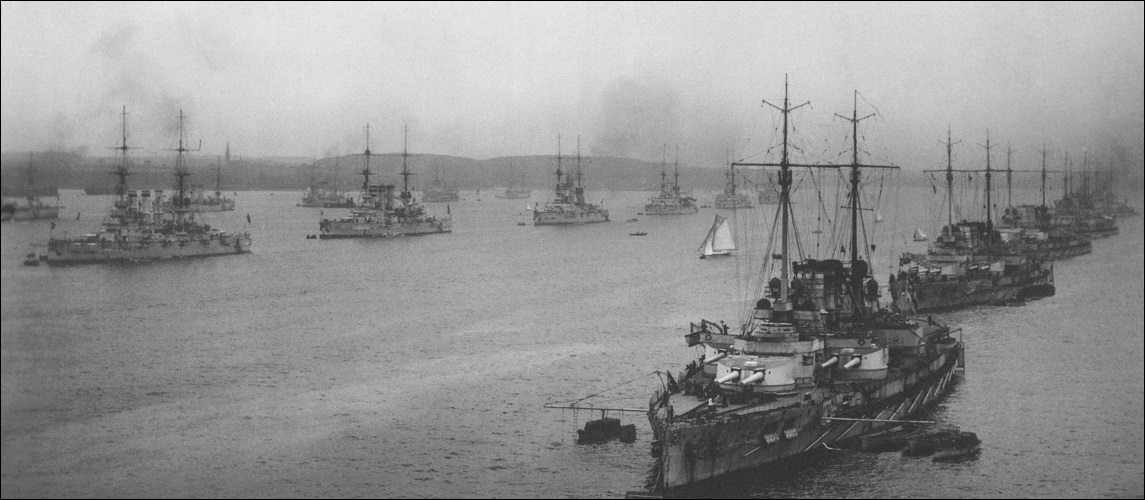● ● ●
The strategic imperatives governing
the Great War at sea were embodied in the central standoff
between Britain’s Royal Navy and Germany’s Kaiserliche
Marine.
For
Britain, a globe-spanning imperial power heavily dependent
on imports to feed both industry and population, freedom of
the seas was the sine qua non of victory; naval supremacy
was its guarantee. These considerations governed the Royal
Navy’s operations throughout the war. They explain why the
hoped-for clash between the main battle fleets didn’t happen
until May of 1916 and why, when it did, the outcome seemed
indecisive.
When war
broke out in 1914, both the Royal Navy’s leaders and the
British people as a whole looked forward to an early fleet
action in the North Sea: a super-Trafalgar. But the man
newly appointed to command the Grand Fleet (as the Home
Fleet was renamed when war came) took a sober, more
realistic view. Admiral Sir John Jellicoe was a protégé of
Jackie Fisher, the reforming First Sea Lord between
1904 and 1910 (and soon to be reappointed
to that post). In August 1914 he was serving as Second
Sea Lord,
responsible for manning, mobilization,
and other personnel matters.
The First Lord of the Admiralty, Winston Churchill,
selected him to replace the incumbent commander of the Home
Fleet, who was verging on retirement: Churchill felt that a
younger, more dynamic commander was needed. His decision
caused much controversy for the incumbent, Admiral Sir
George Callaghan, was greatly admired. Even Jellicoe
protested to the First Lord over Callaghan’s replacement—to
no avail.
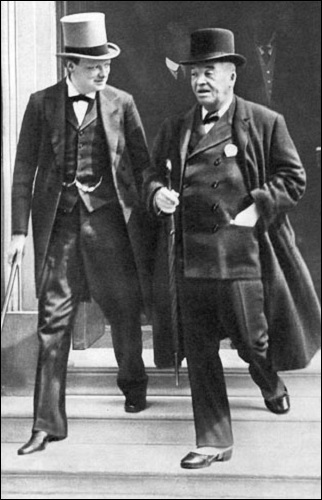
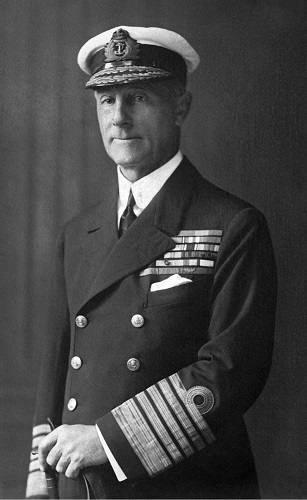
Left: Winston Churchill
and Jackie Fisher. Right: Admiral Sir John Jellicoe
(Imperial War Museum)
John Jellicoe himself was
universally regarded as one of the ablest men in the RN; his
appointment to command the Grand Fleet was a sound move on
Churchill’s part. And it was a fortunate one for Britain
because Jellicoe, despite his natural desire to bring the
German High Seas Fleet (Hochseeflotte)
to battle, was acutely sensible of the risks involved. He
knew that his first, overriding priority as commander of
Britain’s principal naval force was to preserve its power.
As long as the Grand Fleet remained in being, dominating the
North Sea and bottling up the German fleet, the freedom of
the seas would rest with Britain and its allies. And more:
The Grand Fleet’s domination of the North Sea would
automatically impose blockade on Germany and its
allies—strangling their overseas trade and cutting off their
access to foreign sources of raw materials.
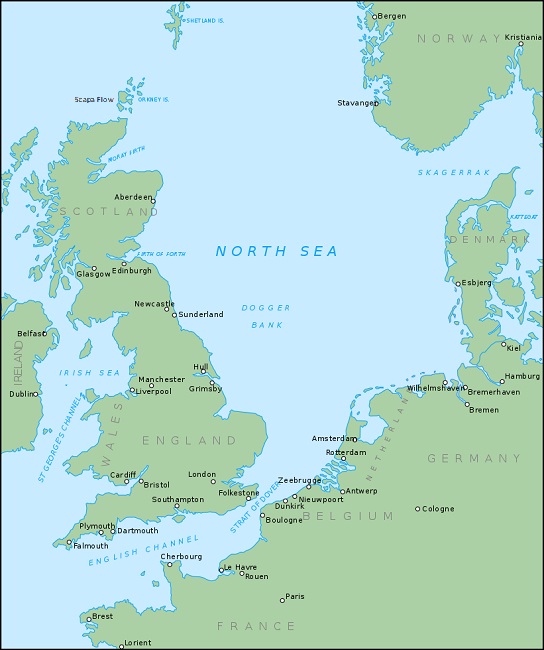
Cockpit of the naval war:
the North Sea (Department of History, USMA West Point)
As a glance at the map
shows, in the face-off between the Grand Fleet and the
Hochseeflotte
geography favored the former. Great Britain lay astride
Germany’s routes out of the North Sea, into the Atlantic.
The English Channel was impassible to German shipping and
the northern passages between the Orkney and Shetland
Islands could easily be closed by minefield and patrols. The
Grand Fleet’s war station was at Scapa Flow in the Orkney
Islands. Its presence there, and its frequent sorties into
the North Sea, gave security to the patrols that enforced
the blockade.
In short,
the Grand Fleet’s mere existence secured the basic
objectives of British naval strategy—a fact of which Admiral
Jellicoe was only too well aware.
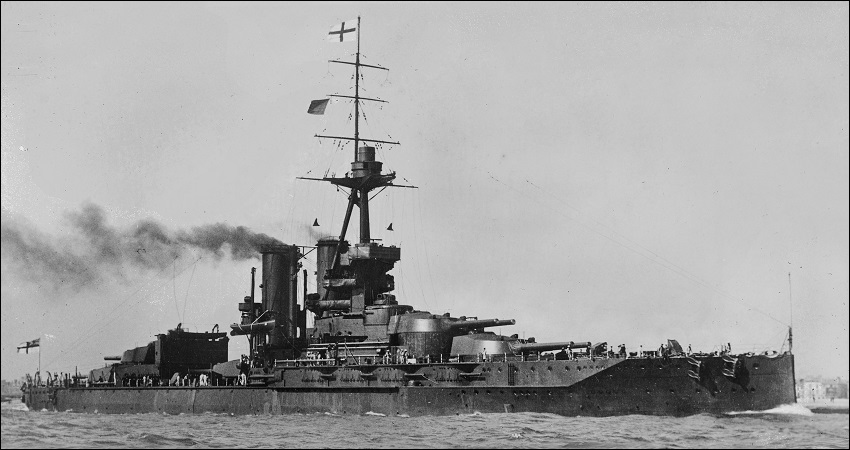
Battleship HMS Iron
Duke, flagship of the Grand Fleet 1914-17
(Naval
Encyclopedia)
In August 1914 the Royal
Navy in home waters outnumbered the Kaiserliche
Marine by twenty-one
dreadnought battleships plus four battlecruisers to fourteen
dreadnought battleships and five battlecruisers. The RN soon
acquired three additional dreadnoughts: two built in Britain
for the Ottoman Empire, seized in August 1914, and one built
for Chile, purchased later in the year. Both navies had
additional battleships and battlecruisers under
construction, but work was slowed or stopped on all but
those that were close to completion. Initially both fleets
included some pre-dreadnought battleships but these were
quite outclassed by the dreadnoughts and most of them were
soon relegated to secondary duties.
Jellicoe’s overriding concern was to preserve the Grand
Fleet’s initial margin of superiority and he worried constantly that
some mishap—battleships torpedoed by submarines, or sunk in
a minefield, or caught unsupported by a superior German
force—might pare down that margin. These anxieties governed
his conduct of operations in the North Sea from the
beginning of the war to May 1916, when the two battle fleets
finally clashed at Jutland. In August 1914 he carefully
explained to Churchill the dangers of a too-aggressive
policy. The obvious German strategy would be gradually to
even the odds by sinking a ship here and a ship there.
Therefore, said Jellicoe, he would “decline to be drawn”
into a possible submarine ambush or onto a suspected
minefield. Churchill, despite his passionate desire to bring
off a decisive fleet engagement, accepted this reasoning. At
all costs, the Grand Fleet must remain in being.
And in fact, German naval
strategy at the beginning of the war envisioned just such a
gradual evening of the odds: Early operations in the North
Sea were intended to provoke a reaction from the British,
presenting opportunities for isolating and destroying some
portion of the Grand Fleet. To do this it would be necessary
to bring the whole Hochseeflotte
into contact with some part
of the Grand Fleet. To that end, the former’s First Scouting
Group with its high-speed battlecruisers conducted a number
of bombardments of British North Sea coastal towns in late
1914 and early 1915. The idea was to lure out the Grand Fleet’s Battlecruiser Squadron, which would then be engaged by the
Hochseeflotte,
lurking just over the horizon. But the desired ambush never
came off, thanks to the fog of war and uncertainty that
obscured naval operations at a time when radar did not exist
and air reconnaissance was in its infancy.
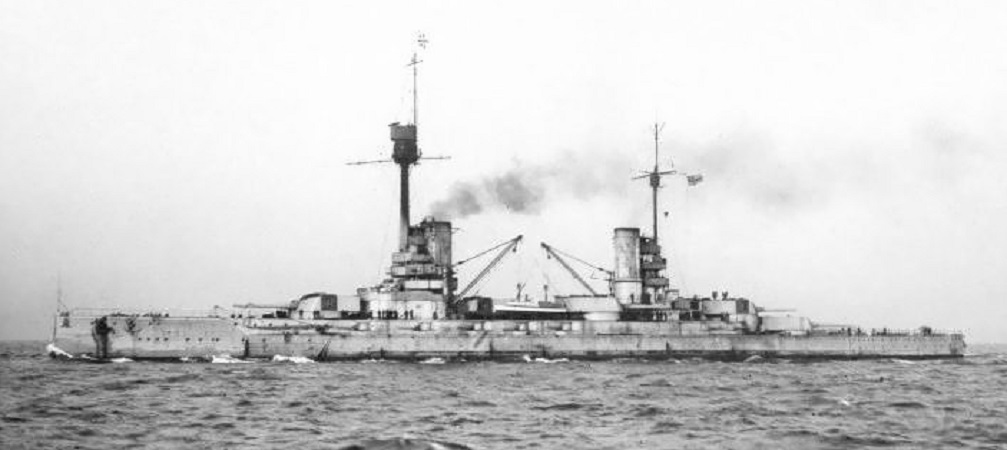
Battleship
Friedrich der Gross,
flagship of the
Hochseeflotte
1912-17 (Bundesarchiv)
Elsewhere, in the Mediterranean, the Pacific and the South
Atlantic, the early days of the naval war witnessed many
dramatic incidents, including a stinging
defeat for the Royal Navy, albeit one that was soon avenged.
But at sea as on land, the bedrock strategic imperatives of
those early days set up the pattern of the Great War.
